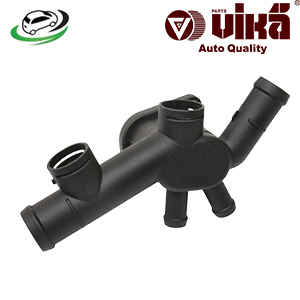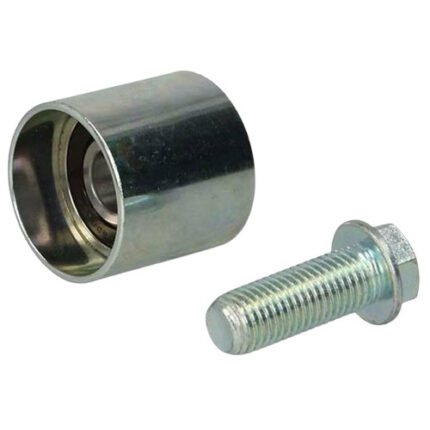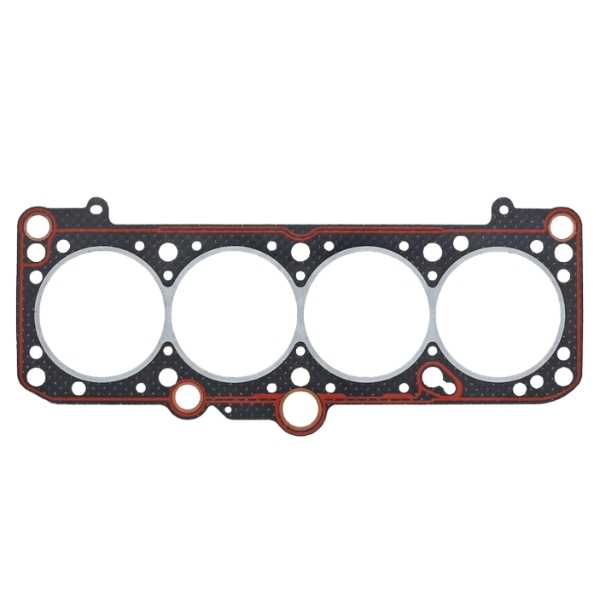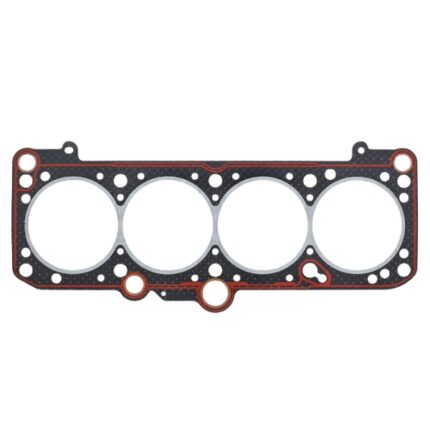Get AUDI 4B Engine Cylinder Head Gasket 026103383K 026103383K
The engine cylinder head gasket is a critical component in a vehicle’s engine, responsible for sealing the interface between the engine block and the cylinder head. This gasket ensures proper engine operation by maintaining compression and preventing leaks. Here’s a detailed yet simple explanation of what it is, how it works, and why it’s so important.
What is an Engine Cylinder Head Gasket?
The engine cylinder head gasket is a flat, often multi-layered seal that sits between the cylinder head and the engine block. It is typically made from a combination of materials, such as metal, graphite, or composite materials, designed to withstand high temperatures and pressures within the engine. The gasket plays a crucial role in creating a tight seal between these two critical engine components.
How Does the Cylinder Head Gasket Work?
The cylinder head gasket operates in the following manner:
- Sealing Combustion Chambers: The gasket seals the combustion chambers in the engine. This ensures that the high-pressure combustion gases produced during the engine’s operation do not escape into other areas of the engine.
- Preventing Coolant and Oil Leaks: The gasket also prevents coolant and engine oil from leaking out of the engine. It ensures that these fluids stay within their respective passages and do not mix with each other or escape from the engine.
- Maintaining Compression: By creating a tight seal between the cylinder head and the engine block, the gasket helps to maintain the proper compression levels within the combustion chambers. This is essential for engine performance and efficiency.
- Withstanding Heat and Pressure: The cylinder head gasket is designed to withstand the extreme temperatures and pressures generated by the engine. It must remain effective despite these harsh conditions to ensure proper engine operation.
Why is the Cylinder Head Gasket Important?
The cylinder head gasket is vital for several reasons:
- Prevents Leakage: The gasket’s primary function is to prevent leaks of coolant, oil, and combustion gases. Leaks can lead to overheating, reduced engine performance, and potential engine damage.
- Maintains Engine Performance: Proper sealing by the gasket ensures that the engine maintains the correct compression levels and operates efficiently. Poor sealing can lead to decreased power, increased fuel consumption, and rough engine operation.
- Protects Engine Components: By preventing leaks and maintaining proper compression, the gasket helps protect other engine components from damage caused by overheating, contamination, or inadequate lubrication.
- Ensures Longevity: A well-functioning cylinder head gasket contributes to the overall longevity and reliability of the engine. It helps to prevent costly repairs and extends the engine’s lifespan.
Signs of a Failing Cylinder Head Gasket
A failing cylinder head gasket can lead to serious engine problems. Here are some common signs that the gasket may be failing:
- Overheating Engine: One of the most common signs of a failing gasket is engine overheating. If the gasket is not sealing properly, coolant may leak into the combustion chambers or out of the engine, leading to overheating.
- White Smoke from the Exhaust: White smoke from the exhaust can indicate that coolant is leaking into the combustion chambers. This can occur if the gasket is compromised, allowing coolant to mix with the engine oil and burn off.
- Milky Oil: If the engine oil appears milky or frothy, it may be contaminated with coolant. This can be a sign of a blown head gasket allowing coolant to mix with the oil.
- Loss of Engine Power: A failing gasket can lead to a loss of engine power or performance. This may be due to decreased compression in the combustion chambers or contamination of the fuel mixture.
- Coolant Leaks: Leaks of coolant around the engine or under the vehicle can indicate a problem with the cylinder head gasket. Check for puddles of coolant or signs of leakage around the gasket area.
- Bubbles in the Radiator: If you notice bubbles or foam in the radiator, it may indicate that combustion gases are escaping into the cooling system due to a faulty gasket.
Maintaining the Cylinder Head Gasket
Proper maintenance of the cylinder head gasket involves several key practices:
- Regular Oil and Coolant Changes: Regularly change the engine oil and coolant according to the manufacturer’s recommendations. This helps to keep the engine clean and prevent contamination that can affect the gasket.
- Monitor Engine Temperature: Keep an eye on the engine temperature gauge and address any signs of overheating promptly. Overheating can put excessive stress on the gasket and lead to failure.
- Check for Leaks: Periodically inspect the engine for signs of coolant or oil leaks. Address any leaks promptly to prevent damage to the gasket and other engine components.
- Follow Maintenance Schedule: Adhere to the vehicle manufacturer’s maintenance schedule for the engine and cooling system. Regular inspections and servicing can help identify and address potential issues before they become serious problems.
Replacing the Cylinder Head Gasket
If the cylinder head gasket fails or shows signs of significant wear, it’s important to replace it as soon as possible. Here’s a general overview of the replacement process:
- Preparation: Gather the necessary tools, a new gasket, and any other required parts. Ensure the engine is cool before beginning work.
- Remove the Cylinder Head: To access the head gasket, you’ll need to remove the cylinder head. This typically involves removing the valve cover, intake and exhaust manifolds, and other components attached to the cylinder head.
- Clean the Surfaces: Once the cylinder head is removed, clean the mating surfaces on both the cylinder head and the engine block. Remove any old gasket material and ensure the surfaces are smooth and free of debris.
- Install the New Gasket: Place the new head gasket onto the engine block or cylinder head, ensuring it is properly aligned. Follow the manufacturer’s specifications for gasket placement and orientation.
- Reinstall the Cylinder Head: Carefully position the cylinder head back onto the engine block. Secure it with the appropriate bolts, following the recommended torque specifications and tightening sequence.
- Reassemble the Engine: Reinstall all the components that were removed, including the valve cover, manifolds, and any other parts. Refill the engine with fresh oil and coolant.
- Check for Leaks: Start the engine and let it reach operating temperature. Check for any signs of leaks around the new gasket and ensure that the engine is operating smoothly.
Follow us on Facebook for more parts.




